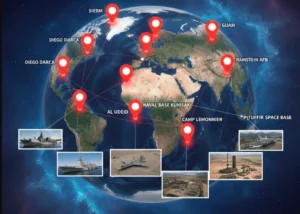In the Western Alaska hub community of Bethel, where only 16 miles of roads exist and is surrounded by wilderness, a broader regional transportation network becomes apparent from a wider perspective. This network includes the approximately 300-mile Kuskokwim River Ice Road.
Ryan Marlow, drone program manager for the Alaska Division of Statewide Aviation, recognizes an opportunity to extend the reach of drones and remote sensing technology far beyond the established road system. This initiative prioritizes public safety and commences with the ice road.
“During a drone training session in Bethel on April 12, Marlow emphasized the importance of leveraging digital scanning capabilities, photography, and Starlink connectivity in every community. He highlighted the significance of enabling residents to report incidents such as vehicles falling through open-water holes, reducing reliance on individual observations to determine road safety.
Marlow has successfully launched the Alaska Rural Remote Operations Work Plan (ARROW) program, which recently received $2 million in funding from the U.S. Department of Transportation. The drone program aims to enhance disaster response, safeguard critical infrastructure, and ensure the well-being of residents across Alaska’s remote regions.”
“If it succeeds in Alaska, it can succeed anywhere, and Bethel serves as the testing ground for much of this technology,” Marlow remarked. “We’re witnessing significant advancements and demonstrating to the community that this technology is available and actively utilized by individuals in Bethel.”
In mid-April, Marlow arrived in Bethel to lead an intensive three-day training session. He was joined by transportation personnel from state and federal agencies and instructors from Skydio, a leading U.S. drone manufacturer.
By the conclusion of the third day, Eric Evon, transportation manager for the Association of Village Council Presidents and one of five attendees from the tribal consortium, was already exploring potential applications for the technology.
“One of the most impressive aspects of this technology for me was the ability to operate it remotely from places like Oscarville,” Evon said. I can control it from here, capture images, record videos, or perform any necessary tasks. It’s truly mind-blowing.”
The training team introduced the Skydio X10, a new ultra-compact drone capable of flying in complete darkness, conducting automated 3D structure scans, and reaching up to 45 mph speeds.
Additionally, the team brought components of a compact system centered around the X10, designed for easy deployment in Alaska’s most remote communities. This system integrates drones with Starlink low-earth-orbit (LEO) satellite units and backup batteries. Once deployed, these systems offer real-time aerial support for various purposes, including disaster response.
“We learned valuable lessons from Typhoon Merbok. Our main challenge was data collection, as we were overwhelmed with data that couldn’t be transferred efficiently—we even resorted to sending hard drives,” Marlow explained. A couple of Starlink units proved immensely successful in providing instant connectivity, prompting us to explore ways to downsize this technology.”
ARROW Program Opportunity for Bethel and Other Alaska Communities

Bethel and nine other Alaska communities selected for the ARROW program emerged victorious among hundreds of applicants to secure the initial grants from the U.S. Department of Transportation’s Strengthening Mobility and Revolutionizing Transportation (SMART) program.
According to Marlow, establishing a skilled workforce is crucial to ensure sustained funding for the ARROW program. “We made concerted efforts to distinguish ourselves from just another grant program entering the community,” Marlow stated. “Our focus is on long-term sustainability, which hinges on workforce development.”
Fortunately, the program can already showcase success stories, such as high school senior Bryan Jones from Quinhagak, who participated in the training and forged connections with representatives from Alcan Electrical and Engineering present at the event.
If Jones agrees to participate, he can receive compensation from the Alaska contractor at union rates for any drone scanning tasks he completes during the grant period. He must pass the federal Part 107 exam and obtain his drone license, which he intends to do in Bethel this summer.
Jones described the training opportunity as unlike anything he has ever experienced, including the ability to operate a drone on the Delaney Park Strip in Anchorage via a cellular connection from Bethel.
“Controlling a drone from Anchorage to here using Starlink, that’s a technology I’ve never encountered before. It’s truly groundbreaking,” Jones remarked.
The ARROW program introduces numerous innovations alongside funding uncertainties. However, if the program achieves its objectives in the Yukon-Kuskokwim Delta over the coming years, it will likely inspire further initiatives in Bethel.











